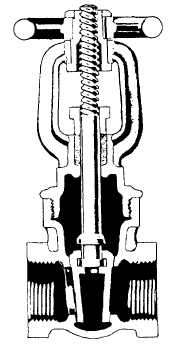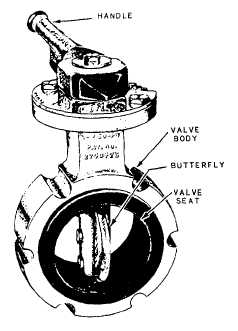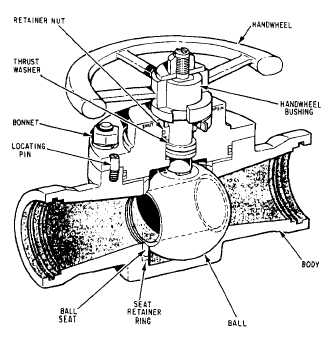Figure 9-20.—Cutaway view of a gate valve (rising-stem
type).
Figure 9-21.—Butterfly valve.
quick-acting, provides positive shut-off, and can
be used for throttling.
The butterfly valve has a body, a resilient seat,
a butterfly disk, a stem, packing, a notched
positioning plate, and a handle. The resilient seat
is under compression when it is mounted in the
valve body, thus making a seal around the
periphery of the disk and both upper and lower
points where the stem passes through the seat.
Packing is provided to form a positive seal around
the stem for added protection in case the seal
formed by the seat should become damaged.
To close or open a butterfly valve, turn the
handle only one quarter turn to rotate the
disk 90°. Some larger butterfly valves may
have a handwheel that operates through a gearing
arrangement to operate the valve. This method
is used especially where space limitation prevents
use of a long handle.
Butterfly valves are relatively easy to maintain.
The resilient seat is held in place by mechanical
means, and neither bonding nor cementing is
necessary, Because the seat is replaceable, the
valve seat does not require lapping, grinding, or
machine work.
BALL VALVES.— Ball valves, as the name
implies, are stop valves that use a ball to stop or
start the flow of fluid. The ball (fig. 9-22)
performs the same function as the disk in the
globe valve. When the valve handle is operated
to open the valve, the ball rotates to a point where
the hole through the ball is in line with the valve
body inlet and outlet. When the valve is shut,
which requires only a 90-degree rotation of the
handwheel for most valves, the ball is rotated so
Figure 9-22.—Typical seawater ball valve.
9-15






